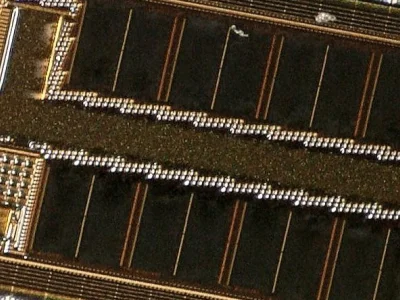The aim of the Competence Center for Custom Semiconductor Technologies (CSCT) of the Faculty of Engineering, is the development and testing of semiconductor-based components for specific applications. There will be an increasing need in future for components and sensors that can be operated reliably and precisely at very low or high temperatures and within a high radiation exposure. As key components of scientific instruments or of experiments in quantum technologies, these devices require a development process that is tailored to the specific application.
Research
Space applications
A paradigm shift has taken place in the space sector over the last decade. Under the term “New Space”, the barrier to space has been drastically reduced with the possibility of employ state-of-the-art technologies in satellites. As these so-called COTS (Commercial off-the-shelf) components are not certified for space applications, the development of COTS-based systems for up-stream applications requires extensive testing under environmental conditions of space. This especially includes the study of radiation induced effects.
Quantum technology
Current quantum computers are operated at temperatures close to absolute zero, in the range of a few millikelvin (mK). However, the control and monitoring of this technology requires extensive conventional electronic components (COTS), which were fabricated to be employed near room temperature. In order to minimize the heat input of conventional electronics to parts, which are cooled down to some mK, existing structures have to be adapted for use at low temperatures, in the range of some Kelvin.
Precession measurements
Measuring instruments with high precession form the backbone of innovative technologies and cutting-edge experiments. In particular, single photon measurements are a prerequisite to exploit quantum effects. In this context, a tailored development of sensors and detectors is necessary, which requires a detailed understanding of the physical theory as well as of the applied technology and engineering methods.
Infrastructure
Microelectronics
The CSCT Competence Center uses state-of-the-art electronic infrastructure, in particular measuring systems and electronic equipment. In addition, the FHWN has a wire-bonding machine, a laser recorder, and a microelectronics production line. It furhtermore has access and experience to production facilities via Europractice and a cooperation with CEITEC in Brno.
Mikrosystemtechnik1
Space
In addition to thermal vacuum chambers (TVC), a vibration table and a facility for the controlled generation of magnetic fields and solar conditions, CSCT offers access to and experience with state-of-the-art irradiation facilities.
WIM07555
Low temperature
The cryogenic laboratory includes a cryostat, with which samples can be cooled down to four Kelvin and contacted for electrical measurements. This is used not only for the development of electronics for cryogenic applications but as well for the precise characterization of radiation damage in semiconductors.
Funded projects
Single Event Effect Studies for Aerospace applications (SEERad)
- Funding Agency: The Austrian Research Promotion Agency (FFG)
- Funding: >160.000Euro
- Funding duration: 2023 - 2026
- Consortium: Seibersdorf Laboratories, FOTEC, FHWN (Lead)
Direct detection of light dark matter with quantum detectors (DANAE)
- Funding Agency: Austrian Science Fund (FWF)
- Funding: > 210.000 Euro
- Funding duration: 2020 - 2024
- Consortium: HEPHY, HLL, FHWN (Lead)
Semiconductor Integrated Sensors for fundamental research experiments (Scies4Free)
- Funding Agency: Austrian Science Fund (FWF)
- Funding: > 1.200.000 Euro)
- Funding duration: 2024 - 2028
- Consortium: TU-Wien, HEPHY, FHWN (Lead)
Matterwave Interferometry (MAWI)
- Funding Agency: European Research Council (EU MSC)
- Funding: > 1.200.000 Euro
- Funding duration: 2023 - 2027
- Consortium: Univ. Trieste (Lead), Univ. St. Andrews, Univ. Grenoble, LENS Florence, FOTEC/FHWN
Cryogenisches Halbleiterlabor (CryoLab)
- Funding Agency: Gesellschaft für Forschungsförderung Niederösterreich m.b.H. (GFF)
- Funding: > 250.000 Euro
- Funding duration: 2024 - 2034
- Consortium: FHWN (Lead)
Current Projects
Below is a selection of our current research projects
Teaching
Following the idea of research-led teaching and in order to ensure state-of-the-art education, scientific results from the research projects are incorporated into the Bachelor's and Master's degree courses at the Faculty of Engineering. The training takes place in the laboratories and partner institutions and enables high-quality final theses, which are thus secured with high reliability and validity. This applies to the degree programs:
Contact








